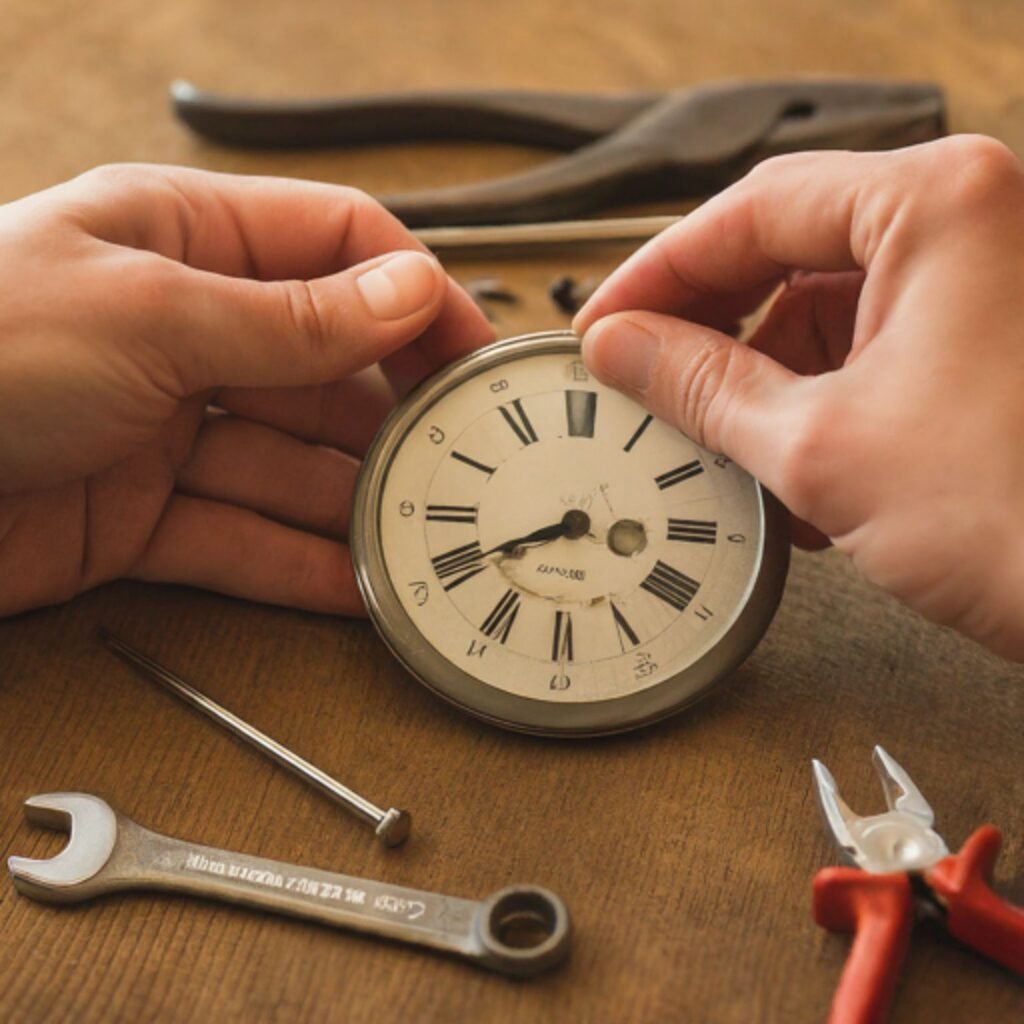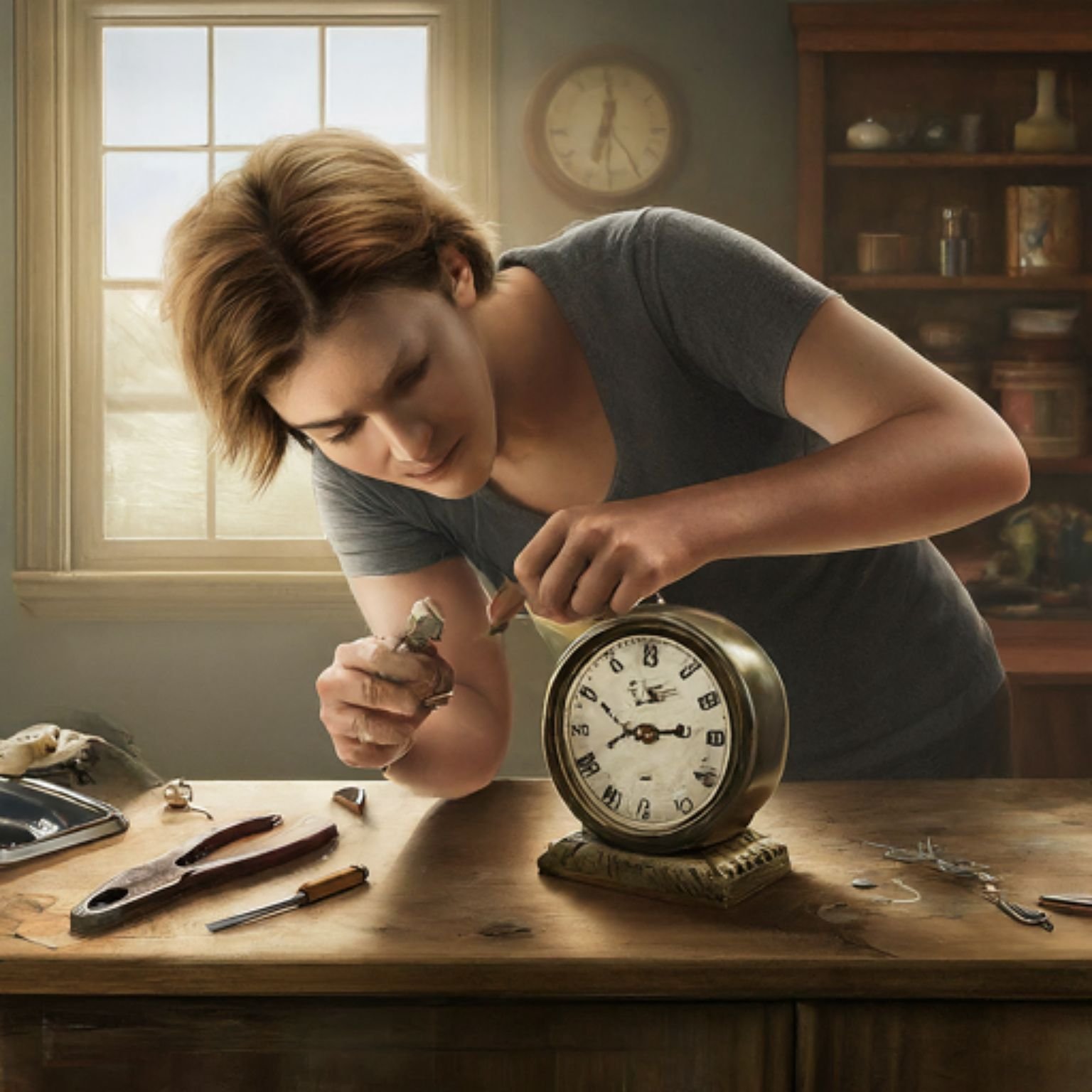Learn how to fix loose minute hand on clock with our step-by-step guide. Expert tips for repairing clocks efficiently and effectively.
There’s something distinctly annoying about a clock with a loose minute hand. It might spin haphazardly without telling the correct time, get stuck on the hour hand, or just flop around uselessly. Besides the inaccurate timekeeping, a loose minute hand can make your clock look uncared for and unreliable.
But don’t fret; fixing a loose minute hand is usually a straightforward DIY project. Most clocks are relatively simple mechanisms, and this particular problem is one that a bit of patience and the right tools can easily overcome.
Types of Clocks
Before we dive into the fix, let’s break down the types of clocks you might encounter:
-
Analogue Clocks: These classic timepieces feature a clock face with hour, minute, and sometimes second hands. Our guide primarily focuses on fixing analogue clocks, where loose minute hands are most common.
-
Digital Clocks: Digital clocks display time electronically and generally don’t have physical hands to loosen. If your digital clock suffers from display issues, it likely needs professional repair or replacement.

Identifying the Problem
A loose minute hand often announces itself with these telltale signs:
- Spinning freely: The minute hand rotates without engaging the gears to accurately set the time.
- Getting stuck: The minute hand catches on the hour hand, preventing it from advancing.
- Wobbly or crooked: The minute hand appears visibly loose, misaligned, or wobbles while moving.
Troubleshooting Tip: If you suspect a loose minute hand, gently wiggle it with your finger. A noticeable lack of resistance confirms the issue.
Tools and Materials
Gather these simple tools before you begin your clock repair mission:
-
Essential Tools
- Small flathead screwdriver or butter knife (for gentle prying)
- Needle-nose pliers
- Magnifying glass (optional, for a closer look)
-
Optional Materials
- Soft cloth (to protect surfaces)
- Clock oil (only needed in rare, advanced cases)
Important Note: While this guide aims to teach you a helpful skill, there will be instances where seeking professional help is wiser. Antique clocks with intricate mechanisms, for example, are best left to a qualified clock repair expert.

Step-by-Step Guide to Fixing a Loose Minute Hand
Ready to get your clock back on track? Follow these steps for a successful fix:
Step 1: Safety First
- Battery Powered: Remove the batteries to prevent any accidental movement during the repair.
- Electric Clocks: Unplug your clock for safety.
Step 2: Remove the Clock Face
- Glass Cover: Many clocks have a protective glass cover, sometimes held in place by a metal rim. Carefully pry off the rim (if applicable) and gently lift the glass to remove it.
- No Glass Cover: If your clock lacks a cover, just proceed to the next step.
Step 3: Remove the Hands
- Second Hand: Most clocks have a thin second hand. Gently pull it straight off its center post.
- Minute Hand: Locate the small nut at the center of the clock face securing the minute hand. Carefully use your needle-nose pliers to loosen this nut. Gently lift the minute hand off its post.
- Hour Hand: Follow the same process as the minute hand – loosen the nut with pliers and carefully remove the hour hand.
Important: Keep track of the order in which you remove the hands; you’ll need to replace them in the reverse order later.
Step 4: Tighten the Minute Hand Nut
-
Inspect the nut: Carefully examine the nut you loosened to remove the minute hand. Check for signs of damage, stripping, or excessive wear. If the nut appears damaged, you’ll likely need to replace it. Clock repair shops or some hardware stores might carry appropriate replacement nuts.
-
Tightening: Hold the base of the minute hand where it joins the center post and gently but firmly tighten the nut using your needle-nose pliers.
-
Caution: Overtightening Risk: Remember, the goal is a snug fit without overtightening. Excessive force can damage the delicate clock mechanism.
Step 5: Reassemble the Clock
Now it’s time to put everything back together:
-
Replacing Hands:
- Hour hand: Replace the hour hand first, lining it up with the current hour (use your phone for accurate time reference). Gently tighten its nut.
- Minute hand: Carefully position the minute hand to point at the 12 o’clock mark. Ensure there’s enough clearance between it and the hour hand, then tighten the minute hand nut you worked on in the previous step.
- Second hand (optional): Finally, press the second hand back onto its center post.
-
Check for Clearance: Gently rotate the minute hand a full circle, ensuring that no hands collide or catch on each other. It’s best to do this slowly and observe closely.
-
Replace Glass Cover: If your clock had a glass cover, carefully reposition it (and the rim, if applicable).
Step 6: Test and Reset the Time
- Reinsert Batteries/Plug In: Reinsert the batteries or reconnect your clock to power.
- Set the Time: Set the correct time, observing whether the minute hand advances smoothly and accurately.
- Celebrate Success: That’s it! Enjoy your accurately ticking clock.
Potential Complications
While most loose minute hand fixes follow these simple steps, occasionally you might encounter a snag:
-
Stubborn Nut: If the minute hand nut refuses to tighten despite your best efforts, try adding a tiny, and I mean tiny, drop of clock oil to the threads for lubrication. Clock oil is specifically designed for delicate mechanisms and can often be found online or at specialty clock repair shops.
-
Bent Minute Hand: In some cases, the minute hand itself may be bent or warped. If the bend is very slight, you can try to gently straighten it with your fingers. For severe bends, replacing the hand might be necessary.
When to Seek Professional Help
Fixing a loose minute hand generally falls within the realm of doable DIY projects, but there are a few circumstances where calling a professional clock repair specialist is advised:
- Antique or Valuable Clocks: Antique clocks can have incredibly intricate and fragile mechanisms. It’s always best to avoid tinkering with these yourself; leave these precious timepieces to the experts.
- Complex Mechanisms: Some clocks have complicated movements with numerous gears and parts. If you feel overwhelmed after examining your clock’s insides, a professional has the knowledge and tools to address the issue safely.
- Persistent Problems: If after following our guide and troubleshooting common issues, your clock’s minute hand remains loose, there might be an underlying issue that requires the expertise of a clock repair specialist.
Conclusion
By following these instructions, you’ve likely restored your clock’s accurate timekeeping. Most loose minute hand issues stem from a simple case of a loosened nut, and the fix lies squarely within the abilities of a motivated DIYer.
Remember, patience and gentle handling are key to successful clock repair. And above all, don’t hesitate to seek professional help when your situation calls for it – some timepieces demand the expertise of a skilled clockmaker. Now, take pride in your fixed clock, a testament to your newfound handiness!
Additional Tips & Considerations
- Regular Maintenance: Prevent future issues by giving your clock occasional gentle cleaning. Dust buildup can sometimes work its way into the mechanisms. A soft cloth will usually suffice to maintain cleanliness.
- Battery Changes: When changing batteries in your clock, take time to inspect the hands. You might catch and tighten a slightly loose minute hand before it becomes a problem.
- Enjoy Your Clocks: A clock is more than just a timekeeping device; it can add character and a touch of history to your space. Whether cherished heirlooms or modern decorative pieces, working clocks elevate a room!
FAQ’s
FAQ 1: Can I fix a loose minute hand on my clock myself?
Answer: Absolutely! In most cases, fixing a loose minute hand is a simple DIY project. With a few basic tools and our step-by-step guide, you can typically tighten the loose component and get your clock ticking accurately again.
FAQ 2: What causes a minute hand to become loose on a clock?
Answer: There are a few common causes for a loose minute hand:
- General wear and tear: Over time, the nut holding the minute hand in place can naturally loosen due to vibrations and regular movement.
- Accidental bumps: Knocking or hitting your clock can sometimes dislodge the hands.
- Improper battery changes: Removing or replacing batteries roughly can potentially affect the positioning of the hands.
FAQ 3: How do I know if the problem is the minute hand and not something else?
Answer: Here’s a quick test: With the clock face exposed, gently wiggle the minute hand. If it moves with very little resistance and feels loose at its center point, it’s likely the culprit. If it wiggles but maintains its normal timekeeping function, then there might be an internal gear issue best left to a professional.
FAQ 4: Do I need special tools to fix a loose minute hand on a clock?
Answer: Luckily, no! You likely already have the necessary tools: a small flathead screwdriver or butter knife for prying, needle-nose pliers for manipulating the nuts, and potentially a magnifying glass for a closer view.
FAQ 5: What if I can’t fix the loose minute hand on my clock?
Answer: Don’t get discouraged! If you’ve tried the guide and it seems too tricky, or your clock still isn’t right, there’s no shame in reaching out to a clock repair specialist. They have the expertise and specific tools to handle more complex issues, especially with antique or valuable clocks.

